Small overlap front: driver-side
Rating applies to 2003-14 models
Tested vehicle: 2014 Volvo XC90 3.2 4-door 4wd
The Volvo XC90 was introduced in the 2003 model year.
| Evaluation criteria | Rating |
|---|---|
| Structure and safety cage | |
| Driver injury measures | |
| Head/neck | |
| Chest | |
| Hip/thigh | |
| Lower leg/foot | |
| Driver restraints and dummy kinematics | |

Action shot taken during the small overlap frontal crash test.

The dummy's position in relation to the door frame, steering wheel, and instrument panel after the crash test indicates that the driver's survival space was maintained very well.
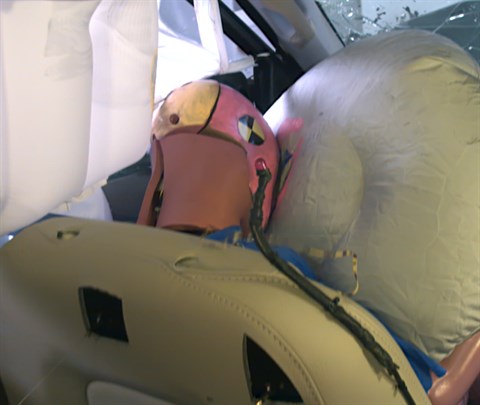
The frontal and side curtain airbags worked well together to protect the head from injury in the crash test. Still, the curtain airbag should extend farther forward toward the A-pillar to protect the head from contact with forward side structure and outside objects if crash circumstances were to differ slightly.
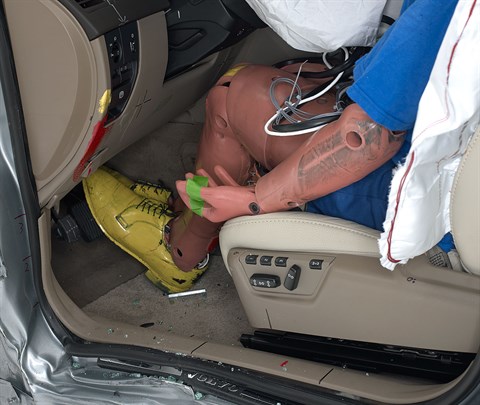
Intrusion into the driver's space was minimal, and risk of injuries to the dummy's legs and feet was low.
Moderate overlap front: original test
Rating applies to 2003-14 models
Tested vehicle: 2003 Volvo XC90 4-door 4wd
The Volvo XC90 was introduced in the 2003 model year.
| Evaluation criteria | Rating |
|---|---|
| Overall evaluation | |
| Structure and safety cage | |
| Driver injury measures | |
| Head/neck | |
| Chest | |
| Leg/foot, left | |
| Leg/foot, right | |
| Driver restraints and dummy kinematics | |
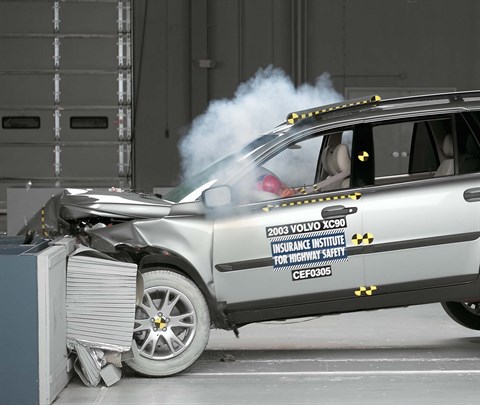
Action shot taken during the frontal offset crash test.
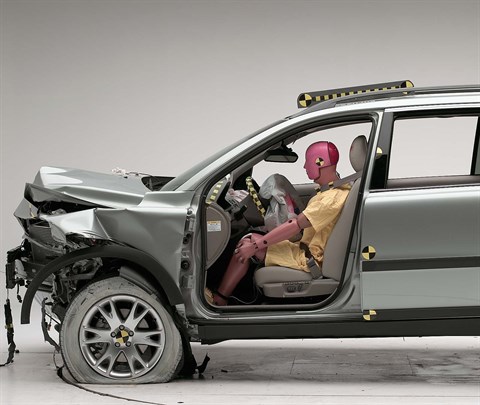
The dummy's position in relation to the steering wheel and instrument panel after the crash test indicates that the driver's survival space was maintained well.
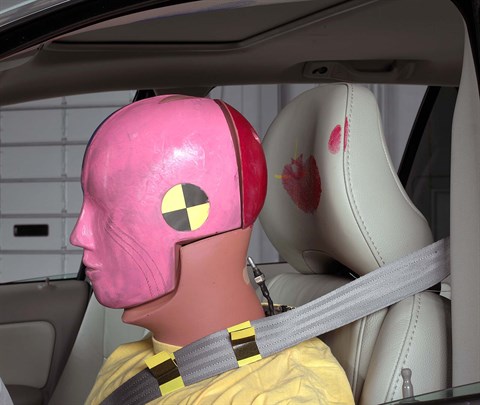
The XC90's head restraints have good geometry, meaning they are high and close to the back of an occupant's head. Moreover, the seatback is specially designed to recline slightly in low-speed rear impacts to minimize the possibility of whiplash injuries.

Intrusion into the driver's space was minimal, and all leg and foot injury measures were low.
Side: original test
Rating applies to 2005-14 models
Tested vehicle: 2006 Volvo XC90 4-door 4wd with standard head curtain airbags for all three rows of seats and standard front seat-mounted torso airbags
The Volvo XC90 was introduced in the 2003 model year. Beginning with 2005 models, the side torso airbags were enlarged to improve occupant protection in side impact crashes.
| Evaluation criteria | Rating |
|---|---|
| Overall evaluation | |
| Structure and safety cage | |
| Driver injury measures | |
| Head/neck | |
| Torso | |
| Pelvis/leg | |
| Driver head protection | |
| Rear passenger injury measures | |
| Head/neck | |
| Torso | |
| Pelvis/leg | |
| Rear passenger head protection | |
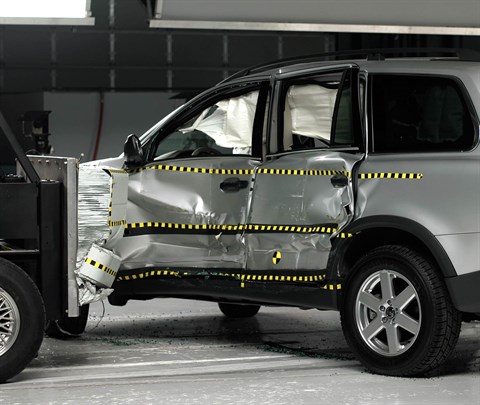
View of the vehicle and barrier just after the crash test.
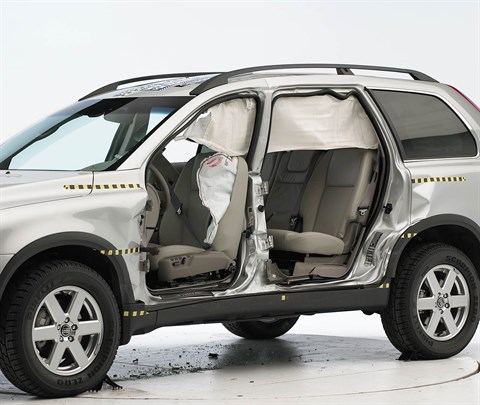
View of the vehicle after the crash with doors removed, showing the side airbags and damage to the occupant compartment.
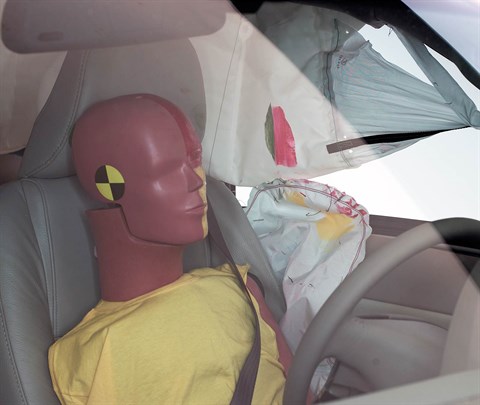
Smeared greasepaint shows where the driver dummy's head was protected from being hit by hard structures by the side airbags.
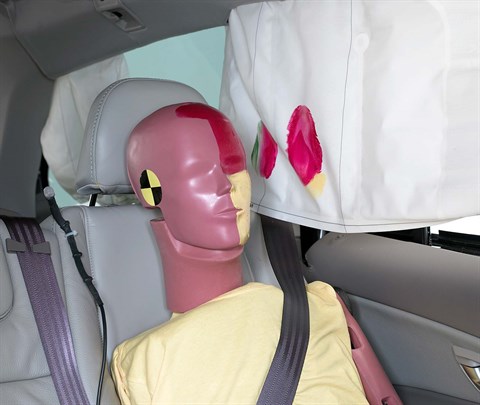
Smeared greasepaint shows where the rear passenger dummy’s head was protected by the side airbag.
Roof strength
Rating applies to 2003-14 models
Tested vehicle: 2010 Volvo XC90 4-door 4wd
| Overall evaluation | |
|---|---|
| Curb weight | 4,718 lbs |
| Peak force | 21,274 lbs |
| Strength-to-weight ratio | 4.51 |
Head restraints & seats
Seat type: All seats
| Overall evaluation | |
|---|---|
| Dynamic rating | |
| Seat/head restraint geometry |
About the head restraint & seat test
Currently, IIHS tests apply only to front seats.
